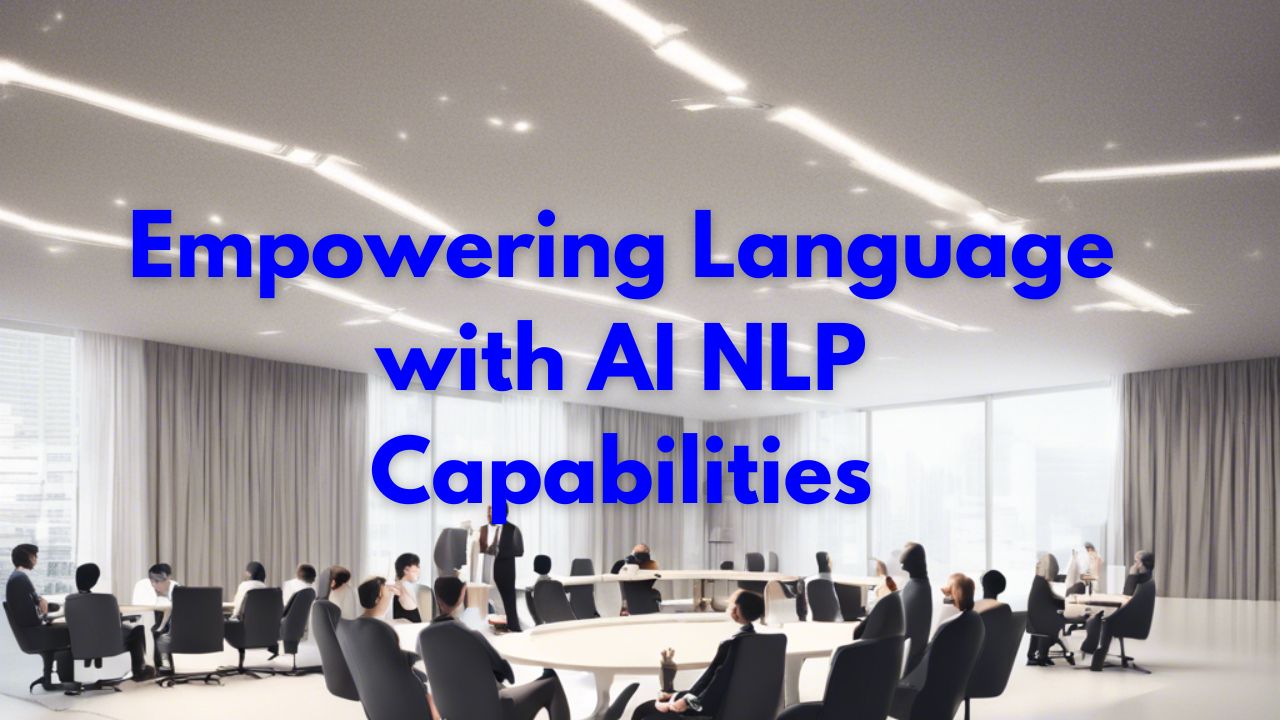
Empowering-Language-with-AI-NLP-Capabilities#
Introduction#
When envisioning artificial intelligence (AI), the initial images that often come to mind are humanoid robots. However, this perception oversimplifies the vast realm of AI, which is fundamentally distinct from natural intelligence—the inherent cognitive capacity found in living organisms shaped by Mother Nature. Life, in all its forms, from microscopic bacteria to complex human beings, possesses an innate intelligence derived from hydrocarbon-based living cells.
The essence of life, intelligence, and consciousness transcends mere philosophical pondering; it’s a contentious debate within the scientific community. In the context of AI, the term refers to the intelligence embedded in machines crafted by human ingenuity. This synthetic intelligence is made possible through the integration of chips, predominantly fashioned from silicon—leading to their colloquial designation as silicon chips. Notably, the epicenter of many IT companies is aptly named Silicon Valley.
In contemporary society, the footprint of artificial intelligence is ubiquitous. From smartphones and computers to household appliances like fridges and air conditioners, as well as industrial machinery, these systems collectively embody what is commonly known as artificial intelligence or “smart systems”.
For millennia, humans have sought a servant surpassing their own intellect yet obedient to their commands. The advent of AI has brought forth this envisioned servant, with AI-powered machines progressively matching and, in some cases, surpassing human capabilities. The journey continues toward achieving Artificial General Intelligence (AGI), a level of intelligence comparable to or exceeding human capacities. AGI holds the promise of seamlessly performing tasks across diverse domains, mirroring the intricate sensory and cognitive processes inherent in human perception—ranging from interpreting signals received through the eyes, ears, skin, nose, and tongue to sophisticated text and image processing capabilities.
NLP Capabilities#
Human capabilities around text are the proof of human intelligence. Since the early time of AI development, AI researchers have been trying to make machines that can do those tasks that humans can do with the text. In the recent past, we have added many capabilities. As of today, these capabilities can be summarized as follows.
- Text Classification and Categorization: It involves tasks like Sentiment Analysis (positive, negative, neutral), Topic Classification, Intent Detection, Document Classification, Spam Detection, sarcasm detection,
- Named Entity Recognition (NER): This tasks involves Identifying and classifying entities (e.g., names, locations, dates) in text
- Part-of-Speech or PoS Tagging: It means tagging each word as noun, verb, adjective, adverb etc to words in a sentence.
- Dependency Parsing: Analyzing grammatical structure and relationships between words in a sentence
- Machine Translation: Translating text from one language to another
- Language Generation: It has tasks like Text Summarization, Text Generation (e.g., chatbots, content creation), Language Style Transfer
- Question Answering (QA): Extractive QA ( Answering questions by selecting text spans from a document), Generative QA (Answering questions with coherent and relevant responses).
- Textual Entailment and Paraphrasing: Determining if one sentence logically follows from another, Generating paraphrased versions of sentences
- Text Completion and Prediction: Auto-completing sentences or predicting the next word in a sequence
- Document Summarization: Condensing longer documents into shorter summaries
- Text Segmentation and Chunking: Dividing text into meaningful segments or chunks
- Text Similarity and Semantic Search: Measuring semantic similarity between text documents or sentences. Conducting semantic search in large text corpora
- Coreference Resolution: Identifying when different words or expressions refer to the same entity
- Sentiment Analysis and Emotion Detection: Determining the sentiment or emotion expressed in a piece of text
- Text-to-Speech (TTS) Synthesis: Converting written text into spoken language
- Speech-to-Text (STT) Transcription: Converting spoken language into written text
- Dialogue Management: Managing multi-turn conversations and interactions with users
- Language Detection and Identification: Detecting the language of a given text
- Morphological Analysis: Analyzing the structure and formation of words
- Multilingual NLP: Handling and processing text in multiple languages
- Cross-lingual Tasks: Translating, transferring, or adapting NLP models across languages
- Humor and Sarcasm Detection: Identifying humorous or sarcastic content in text
- Legal and Medical Text Analysis: Analyzing legal documents or medical records for relevant information
- Code Generation from Natural Language: Converting natural language descriptions into code (e.g., programming)
- Fake News Detection: Identifying and classifying fake or misleading news articles
- Commonsense Reasoning: Inferring and applying common-sense knowledge to text understanding
- Text Analytics for Social Media and Customer Feedback: Analyzing social media posts, reviews, and customer feedback for insights
Final Thought#
In summary, the landscape of artificial intelligence, particularly Natural Language Processing (NLP), unfolds as a tapestry woven with 27 distinct capabilities. From language understanding and sentiment analysis to machine translation and text summarization, these capabilities collectively exemplify the prowess of AI in comprehending and manipulating human language.
As we traverse the realms of AI-driven language processing, it becomes evident that these capabilities extend beyond mere linguistic prowess. They empower systems to discern nuances, sentiments, and contextual intricacies, mirroring a level of comprehension that transcends conventional programming boundaries.
The amalgamation of these 27 NLP capabilities signifies a paradigm shift in how we interact with technology. It’s not just about machines understanding language; it’s about machines understanding us. The potential applications are vast and varied, ranging from personalized virtual assistants and sophisticated chatbots to revolutionary advances in language translation and content generation.
However, with these advancements comes a responsibility to navigate ethical considerations, deepfake, privacy concerns, and biases embedded in algorithms. As we delve deeper into the era of AI-driven NLP, it is crucial to strike a balance between innovation and ethical practice.
In essence, the 27 AI NLP capabilities outlined in this article encapsulate the multifaceted ways in which artificial intelligence is revolutionizing our interaction using power of language. The journey ahead involves not only refining and expanding these capabilities but also embracing a conscientious approach to ensure that the impact of AI on language remains a force for positive transformation in our ever-evolving digital landscape.


Comments: